A white 4x4, Cashmiri guide and driver, an Australian pictures hunter who wanders about the world for 30 years, a young Swedish girl who has courageously chosen India as her first country, a Canadian lumberjack, untiring traveler, and a little French guy that decided to go round the world 3 months ago. An eclectic team and a 10-day communal life in the close future.
We leave Shimla for a long journey by jeep. The discussion starts in the close space of the vehicle. We learn from each other.
The cultures diversity enriches.
The winding road raises into a nascent valley. The misty veil glides onto the hills and wraps the silent nature up. We stop for a stroll in the forest marked out by a Hindu temple at the top. No breathtaking view, nasty clouds weaves a thick fence. Only just a bench to get our breath back and share a chocolate bar.






We start again. The chats carries on. Laughs. Travel experiences. Pieces of advice on next destinations. The frustrating feeling of an unknown chunk in the world. We bring it to mind, we use a few superlatives, we make dream the audience, and this place, utterly absent in my mind, adds up to the list of things to see. More we travel, more places to visit. An endless wheel, traveling makes and unmakes you. On the bumpy Indian roads, we deal with the bears and the salmon fishing into the rivers of Alaska. The visit of the Hanuman temple drags us out of the jeep. A Disneyland-like statue of the monkey-god invites vehicles to stop and spend some moments in silence.



We arrive in Sarahan. The darkness-blackened roofs of the temple announce a great visit for tomorrow morning. We sit down at a small restaurant. The cracked paint, canteen tables, bashed-in saucepan. A Nepali family runs the restaurant and in this only 10-m² room, the comfort of a familial meal, we feel at home.

Hectic awakening. No time to linger, we start tracking the large spiders which invaded the room, a bucket and a bowl as weapons. Then, we take a savoury breakfast and we relate our morning feats.
We leave to visit the temple. Exquisite wood-carved pediments, a hindu ceremony and a carmine tikka on the forehead.





We keep on visiting around the village and it's time to go. On the flank of the road, a cow struggles with a plastic box clung to its head.
The valley subsides. The breathtaking road, carved into the cliff at several hundreds meters high from the ground livens up when multicoloured trucks meet. Wing mirrors bang together. Driving back is sometimes the only solution and the jeep waits close to the void. It goes again on the close turns, pushing down the horn to warn the other vehicles. A dangerously high road that gives thrills to the passengers sitting along the precipice.
A valley with Himalayan dimensions.
The roads bleed the hill white that landslides wreck. Months of works to rebuild the missing parts. An unsuspected activity livens our aerial road when a herd of sheep makes a traffic jam or when a baba sadhu gives candies to the tired drivers and passengers.










We spend 2 nights in Sangla. A wooden temple overlooks the village. We must take off the shoes, don a hat and fasten a belt to get in the old monument.
Clumsy alleyways, purple, azure orchards and flower beds.
The apple trees are weighed down with the red fruits. In the depths of the village, houses with bare or whitewashed harbour a few Tibetan Buddhist souls in exile.









The visit of Sangla is interrupted by an excursion to the village of Chitkul, last village before the Tibetan border. At the wintertime, snowfalls may cut the access to the village. Then, this one lives in autarky, forgotten by the faraway civilization. Biting cold, far from the blazing sun of the Delhi basin.








Tomato omlette, toats with tasteless jam and black tea. En route to Kalpa. Rucksacks piled up in the back of the car, some handlings to get out of the narrow path of the guesthouse, we leave again. The asphalted strip starts again its twirling danse into the wounded cliff while the river below seems to be a mere stream. A dizzy spell strikes me as I size up the turquoise-blue ribbon down the valley. The ballet of the adorned trucks terrifies us, each turn is a trial. We chat to forget the void. A few stops to take photos.
The "Kalpa" sign announces the end of the stage. Here, the marijuana grows like the weed. And the apple trees bend with the weight of their loads. In the distance, the headland of the Kinnaur Kailash makes some bashful appearances through the clouds. In good weather, it lights up with 7 seven different colors throughout the day. Kalpa, another village clung to the slopes of a hill which lives difficult moments when the wind sweeps over the area.










A new day, the road keeps on raising. Dry nature, inhospitable nature. Bushes gush out here and there. The human paw inlaid some ramshackle and insignificant buildings in the earthy titan. The road zigzags on the steep slopes and vanishes at the entrance of Nako. Below the hills, a tiny lake soaks up a few souls who gathered to struggle better. The Himalayan scenery as the only comfort of this hard life. For us, we gorge ourselves on these impressions, these smiles, these wind-stroked stones, these fringes-worn flags fluttering at the top of a mound, these cubic and uneven houses. Where is the madness of the Indian cities ? The horns of the rickshaws and the crawling poverty on the pavements ? Hard to believe we'll still in India. However, that's this diversity which attracts flocks of tourists, far from the hackneyed routes. A simple journey by train and the ecstasy of a bit of greenery clears away the nervous breakdown and the unease of a seething town. We feel well here.












Keyword - buddhist atmosphere -
Sunday 23 September 2007
Perched on the Kinnaur valley
By dorian on Sunday 23 September 2007, 17:25 - RTW-India
Friday 31 August 2007
First steps onto the "roof of the world" country
By dorian on Friday 31 August 2007, 22:35 - RTW-Nepal
Namaste ![]()
"Welcome to Nepal" hurls the wide-smiled Nepali officer giving the passport back to me. He's just appended the precious key which opens me the door of this heavenly country for outdoor activities. I plan to stretch my legs onto some paths of the Himalayan foothills. The country has the distinctive feature to harbour a part of the Himalaya range in the north (the highest mountains range in the world with 8 of the 14 above-8000-meter summits whose legendary Everest climbed in 1953 for the first time by Sir Edmund Hillary and the sherpa Tenzing Norgay) and jungle scenery in the south.
Getting out the airport, the tourism office arranges me transportation and hotel for 10$.
In the beginning of this month of September, the monsoon still pounds the country and the surroundings of the capital city are green. This capital and its Chinese neighbour are incomparable. Old tottering jalopies stroll onto the rough roads. Ill-fitting buildings and smiling Nepali people put up the Kathmandu scenery. I reside in the Thamel district that is tantamount to the Khao San Road in Bangkok. Every backpackers' facilities gather in this district : restaurants, guesthouses, travel agencies, deep "mountainous" connotation libraries, local craft and trekking outfit sellers. With all the tourist-inherent side issues. Marijuana dealers mix with begging children and touts. The pleasure to be Nepali for about fifteen days doesn't make forget the distress of a country which is counts among one of the poorest in the world.
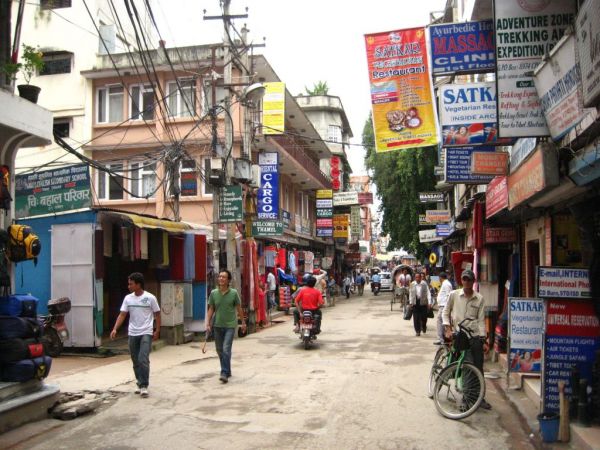
I meet an Italian I embark on visiting the city with. We walk through the market and stop at the sacred and colourful Durbar square.

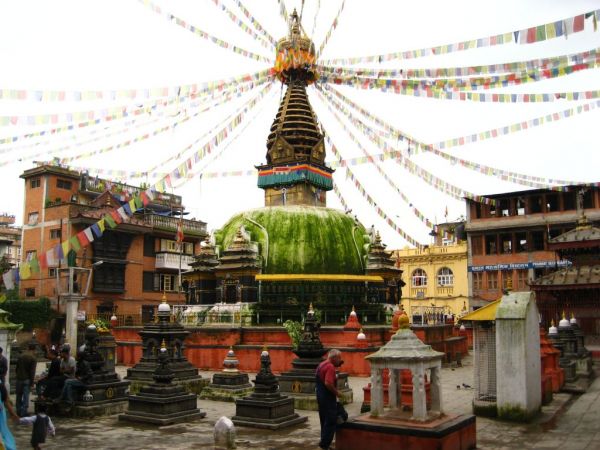
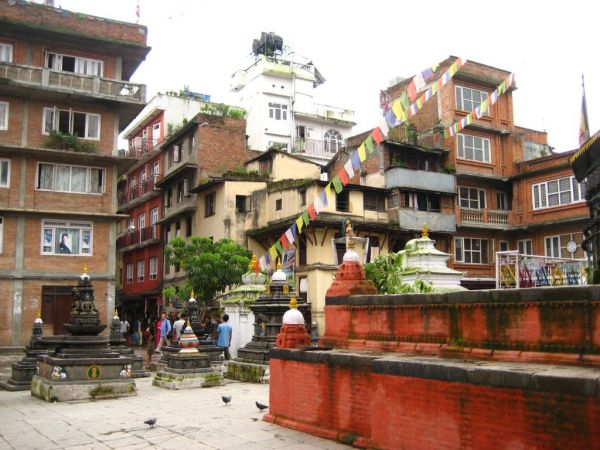
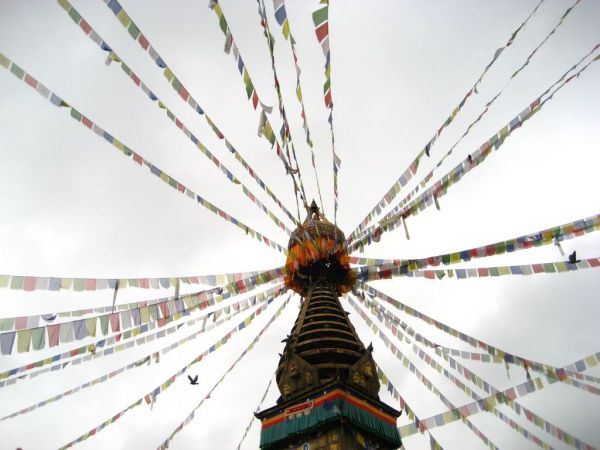

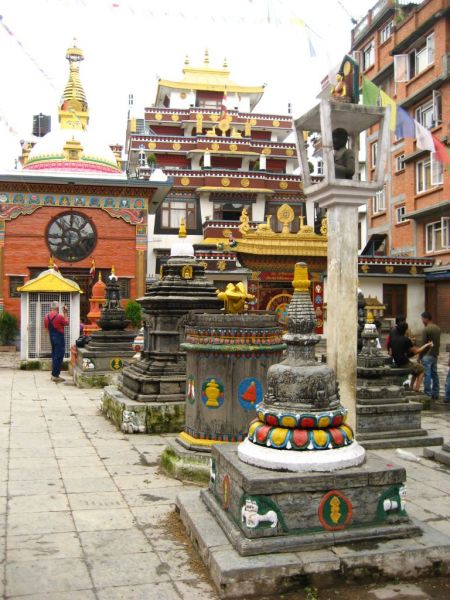
We walk for one hour to reach Patan, an outstanding assembly of Hindu temples. The access to the temple is forbidden to the non-Hindus and from outside, we observe the religious ceremonies. The temples are beautifully carved. I discover the traditions of this religion; I familiarize myself with its precepts and its rules. Hindus wear the tika, the forehead-painted third eye, the one that sees everything. We become soaked with this religious aura before heading back to our lively district.
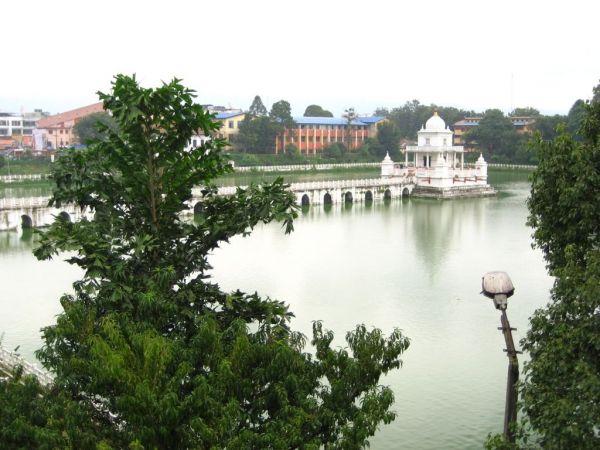
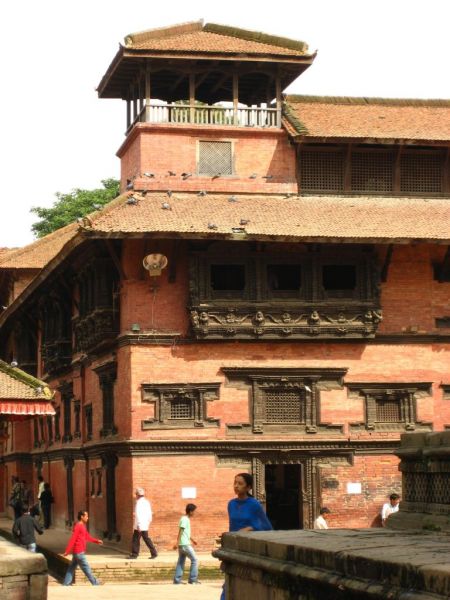
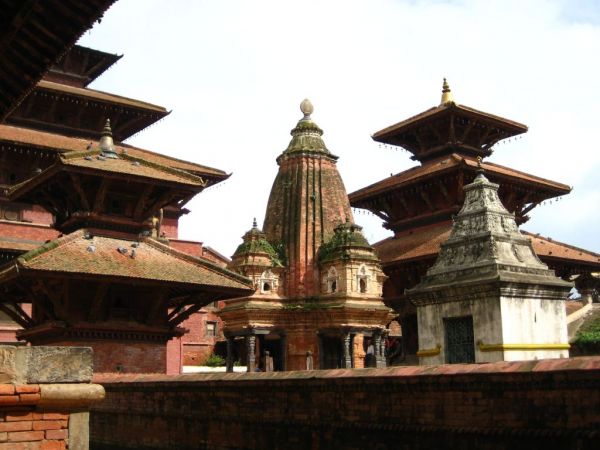
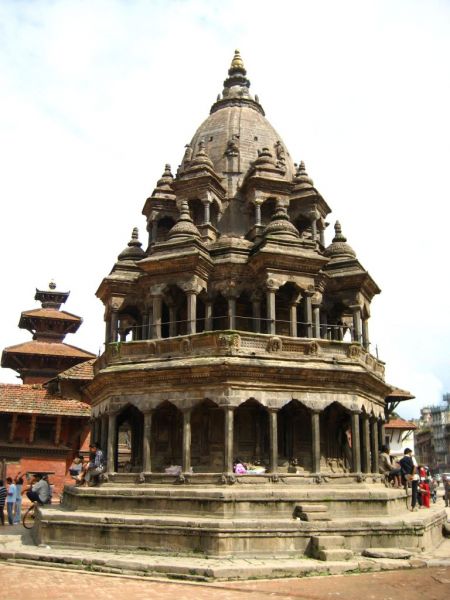
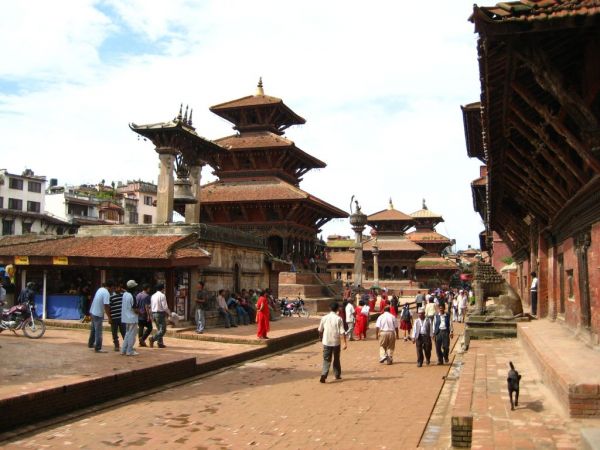
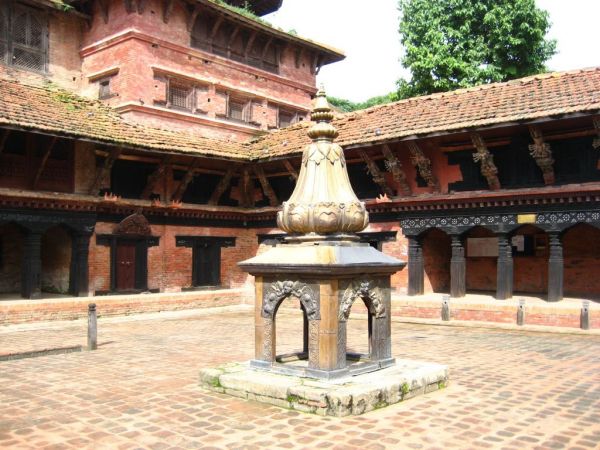
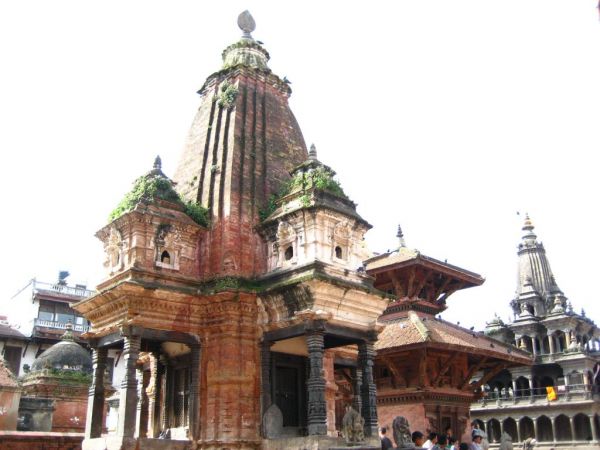
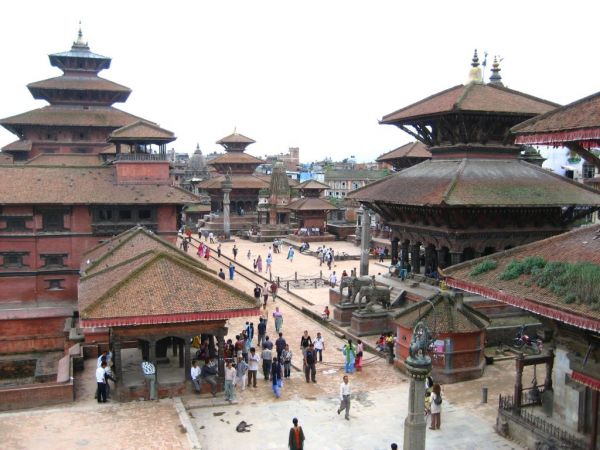
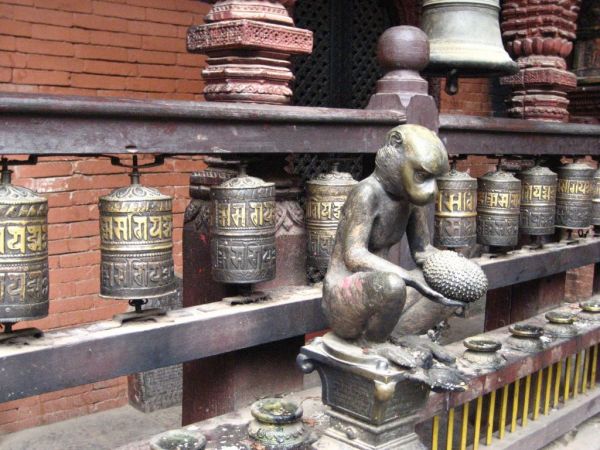
East from the Thamel district, one of the most popular Buddhist temples in Kathmandou is called Swayambhunath, not easy to say it in a conversation without mispronouncing a syllable. Built on a hill, a scheming stupa occupies the central position of the religious area. In the area around, faithful people and tourists lean on to contemplate the unstructured houses of the capital.
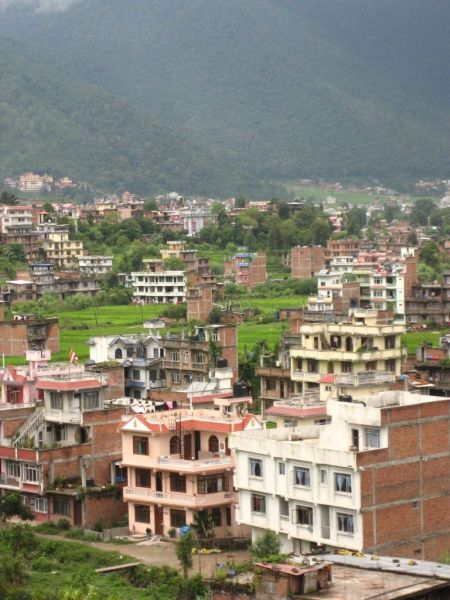
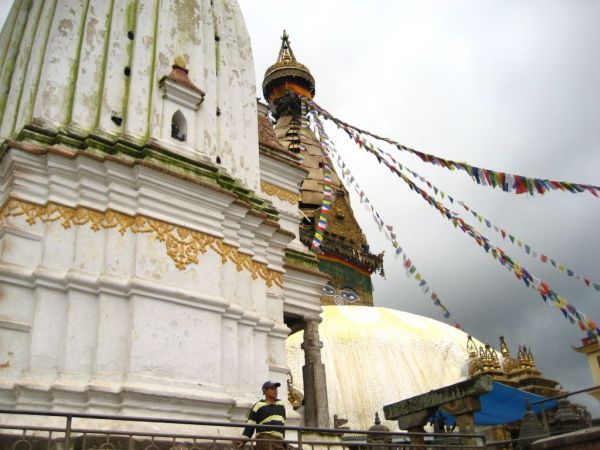
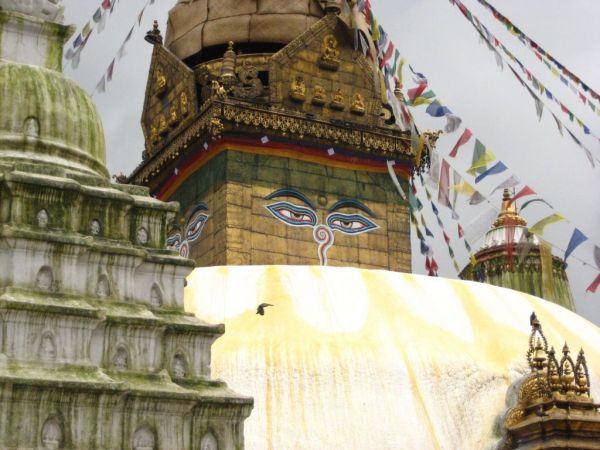
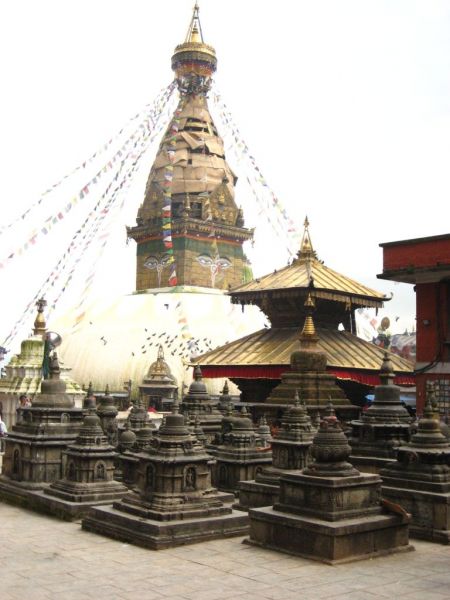


On the other side of the city, the temple of the lord of the beasts Pashupatinah is dedicated to the Hindu religion. Below the temple, the sacred river Bagmati flows, and it's the scene of my first cultural shock. From the other bank, I'm a witness to the cremation rites. Pieces of timber are piled up to a stone slab, the orange-shrouded defunct's body lays out on this wooden bed. The tradition wants the son to walk three times around the body before putting a flaming torch inside the defunct's mouth. A last loop by way of farewell and the purification can start. Several stakes occupy the bank. A crying kid who will respect the rite until the end tears through the silent atmosphere. Emotionally too hard to bear, I prefer to move away. The Bagmati banks deal with the death with a different angle, without anything relative to our culture and I believe we need time before stomaching that kind of experience. Even if everybody knows as Marcel Pagnol said : "the life is a beautiful story that ends bad."

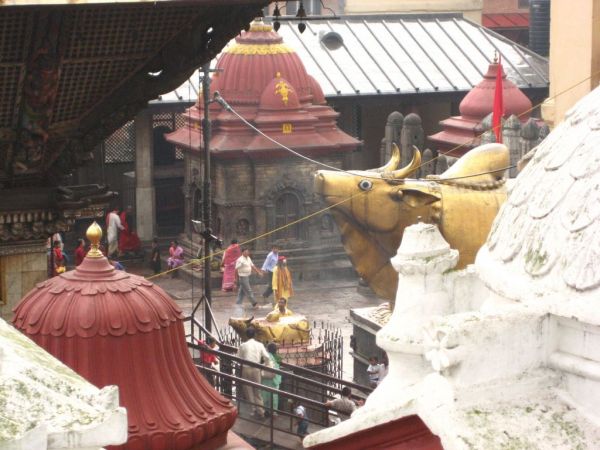
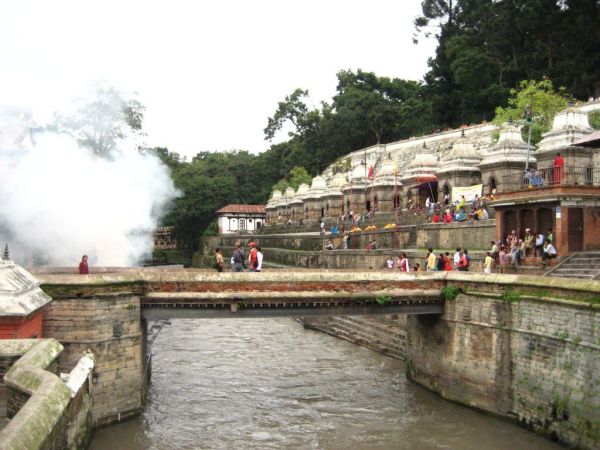
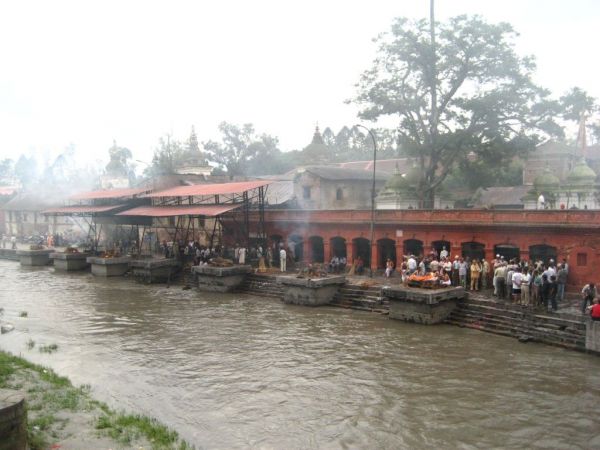
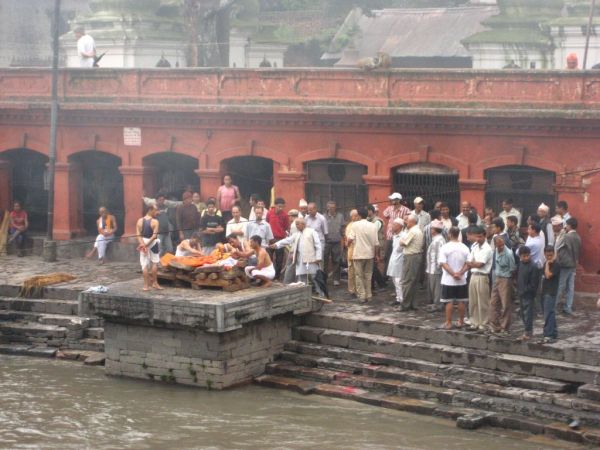
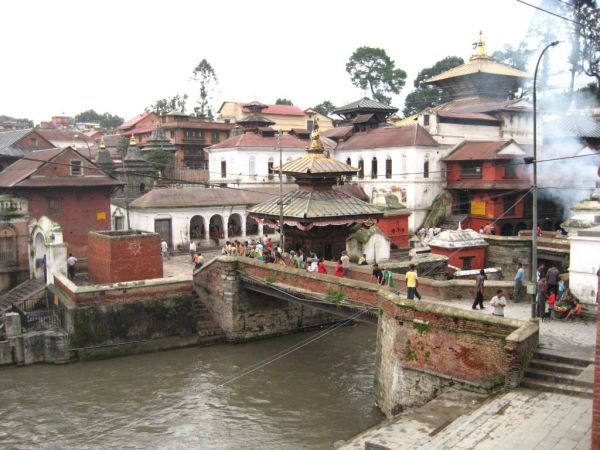
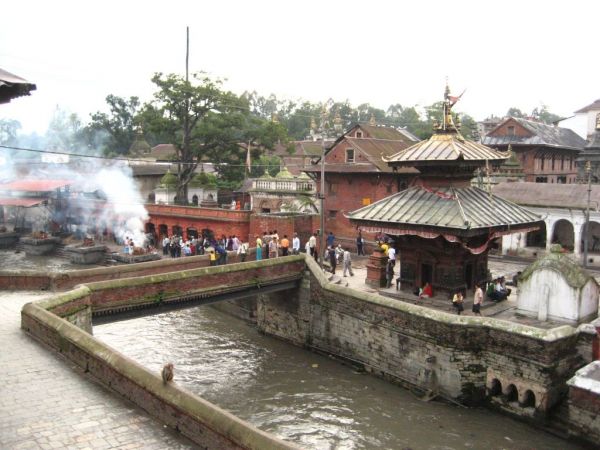
I clear away negative vibes from my spirit walking towards one of the biggest stupas in the world, the Bodhnath stupa. While a procession of followers paces clockwise around the stupa, a wind of positive energy cheers me up. The multicoloured Buddhist flags move about. After the painful scene of the cremations, I need to mix with this crowd and to find again a little bit of inside peace.
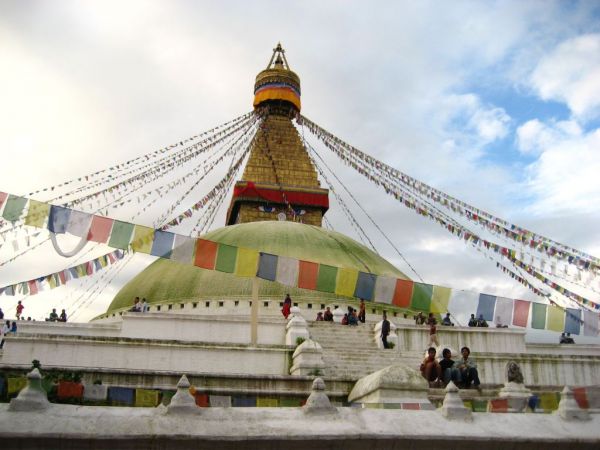
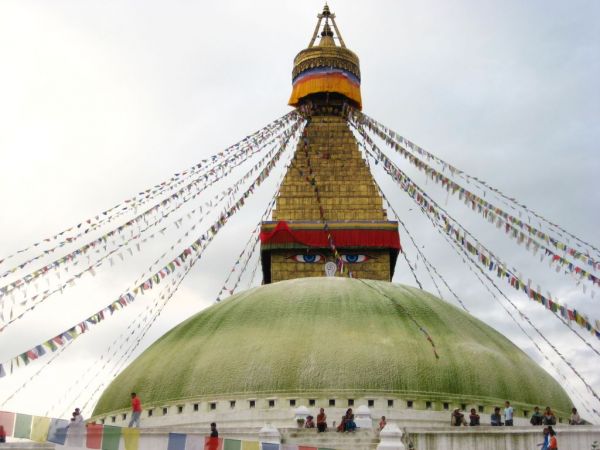
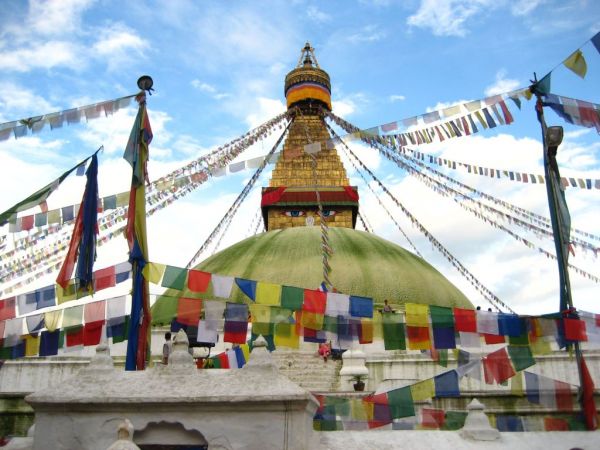
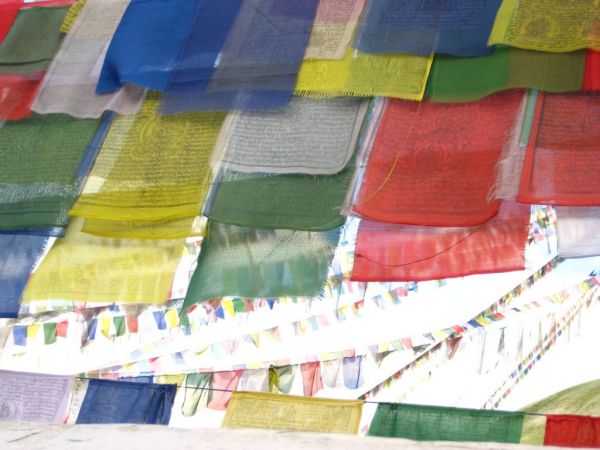


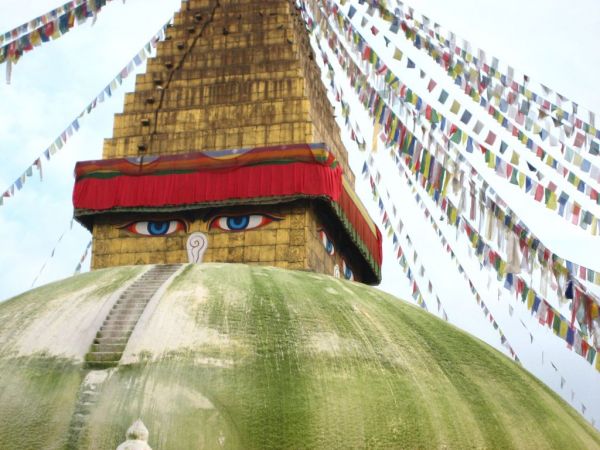
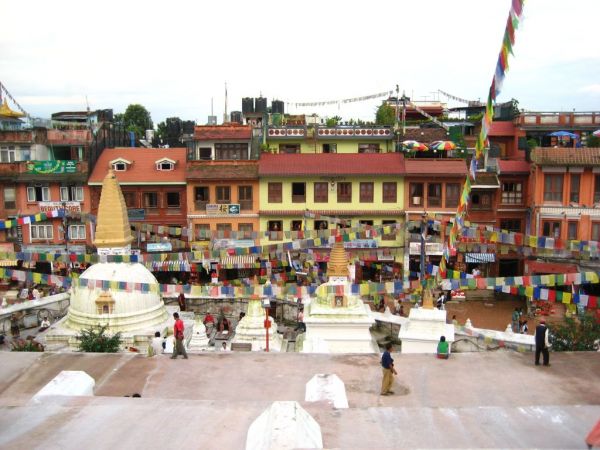
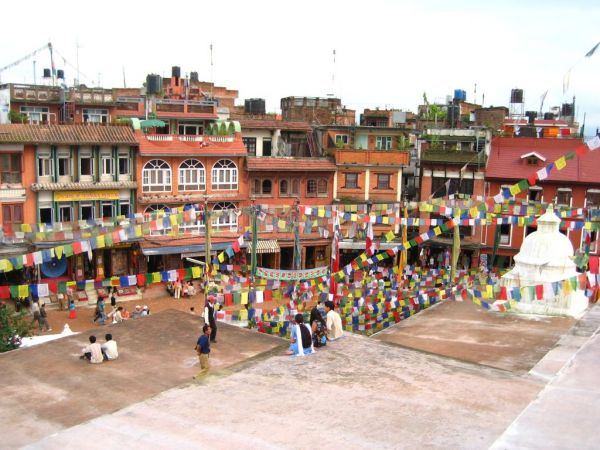
Monday 6 August 2007
The Buddhist grottoes of Longmen
By dorian on Monday 6 August 2007, 22:46 - RTW-China
Luoyang, 5 hours by bus south from Xi'an. The terminus of the number 81 local bus is located at the park entrance of the grottoes of Longmen. On the Unesco world heritage list, the cliffs of the east and west river banks were hollowed out and ornated with Buddhist motifs. The granite gruyère cheese was carved by the faithfuls. The rock clusters niches which formerly sheltered Buddha's representations. Because most of the statues are missing or eroded by the time devastation. Without viing with the splendid northern grottoes of Yungang, the relaxing stroll is flanked by the river on a side and by the cliff on the other one. The giant Buddha surrounded by stone warriors is the main attraction on the east bank.
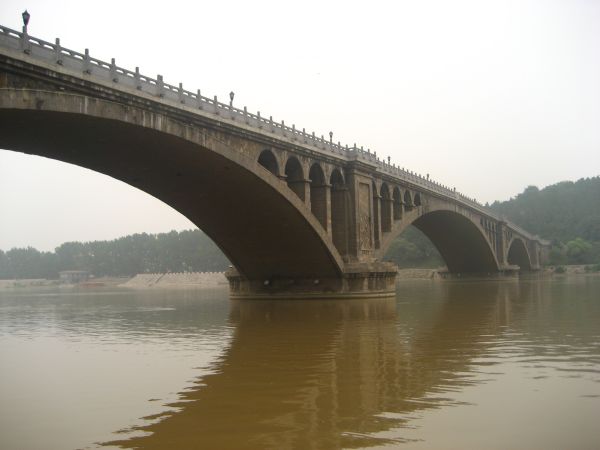

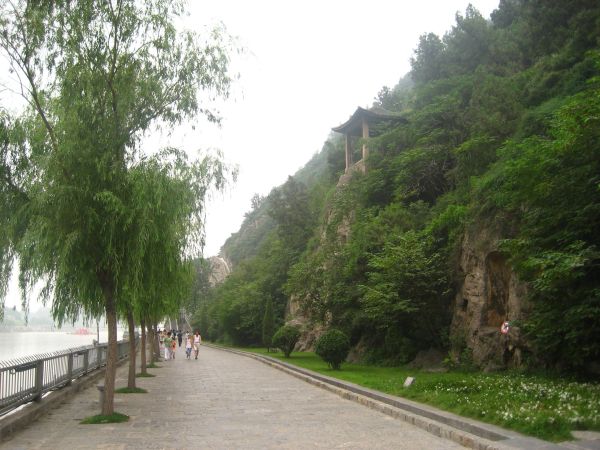
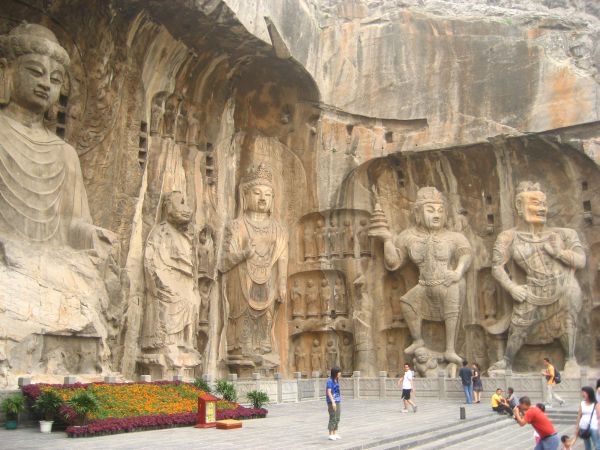
At the end of the cliff, a bridge strides over the river and the walk carries on the opposite bank. A temple without any tourists offers a great point of view on the cut cliff that looks out over us a few minutes before.
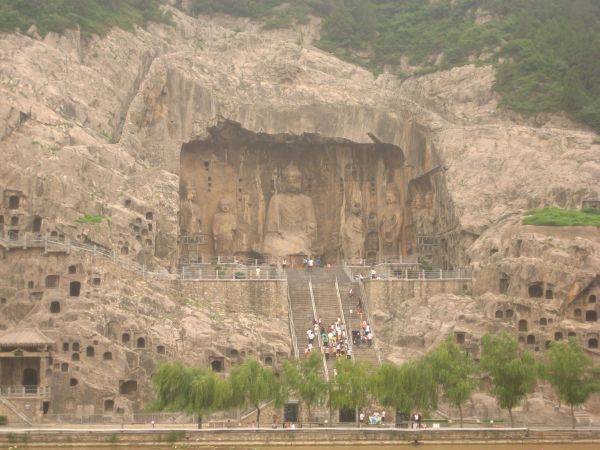
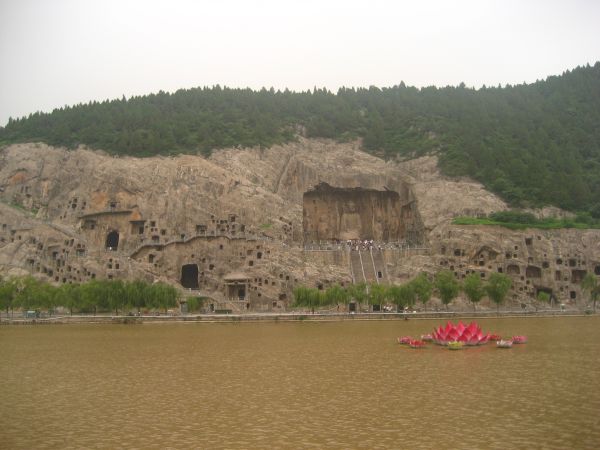
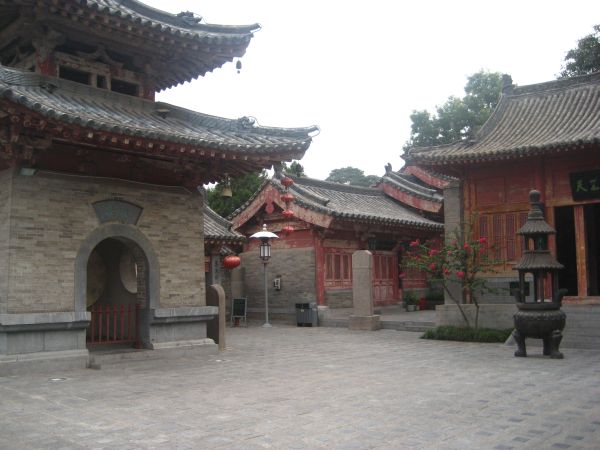
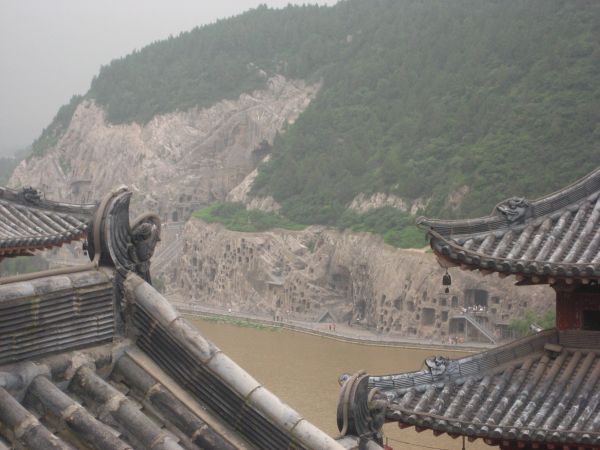
A second bridge takes us to the park entrance while a veil of darkness concludes the immovable spectacle of the grottoes of the dragon gate.
« previous entries - page 2 of 3 - next entries »





 visits
visits